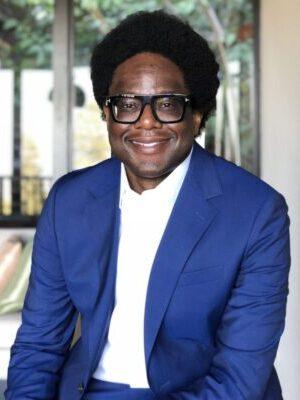Q&A with Osagie K. Obasogie on Election to the National Academy of Medicine

Osagie K. Obasogie was elected as a member of the National Academy of Medicine (NAM) in October 2021. Obasogie, who has been associated with CGS for nearly 20 years, was honored for “bringing multidisciplinary insights to understanding race and medicine.” CGS intern and UC Berkeley student Anna Fang joined Obasogie to discuss his ongoing work with CGS and what he looks forward to as a new member of NAM. The interview has been edited for length and clarity.
First, I wanted to ask, how did you get started working at CGS?
Osagie: I started working at CGS several years ago, originally as part of an effort to explore how the false idea that race reflects inherent biological differences between groups was gaining traction again through developments such as genetic ancestry tests and race-based medicine. CGS has not only been interested in exposing the fallacies behind these ideas, but also highlighting how they are part of a continuing legacy of scientific racism and eugenics that many think went away. My roles have changed over time, but I'm happy to have had a strong relationship with CGS for many years.
How has your work at CGS over the years influenced your academic work and career?
Osagie: CGS has been a critical part of my academic work. Over the years, my interactions with CGS staff members and colleagues from other organizations have deepened my commitment to thinking about issues regarding reproductive and genetic technologies in a particular social and historical context that emphasizes and highlights the lived experiences of people and communities that have been most impacted.
Were you already familiar with the kinds of work and methods of thinking you found at CGS? Did you find their approach very different from work you had done previously?
Osagie: My work with CGS really sharpened my focus on reproductive and genetic technologies. Before working with CGS, I had broad interests in race, health, and medicine. But, my collaborations with CGS and our colleagues encouraged me to think with more particularity about how contemporary issues regarding health and health disparities are being impacted by a new set of technologies that might radically change and redefine how we understand what it means to be human. It was an opportunity to be at the forefront of an important conversation about the ways that science and medicine shape how we think about who gets sick and why.
How do you think that your interdisciplinary approach could help the National Academy of Medicine (NAM) pursue its mission, and their vision of a healthier future for everyone?
Osagie: I think the National Academy of Medicine is doing a really good job in this area. They are very intentional about including new members from diverse disciplinary backgrounds. This is important for how we think about the future of medicine. Bringing in folks from different disciplines – whether it's philosophy, sociology, or other fields related to medicine – creates a good opportunity to make sure that the conversations that we have as a group are informed by as many perspectives as possible. Layered conversations about health and medicine are an important part of promoting diversity, which can allow our recommendations to have a positive impact for many communities. This commitment to interdisciplinarity bodes well for the future of the NAM and will allow the organization to continue to address critical, cutting edge issues.
Is there anything you're particularly looking forward to as a new academy member, like connecting with the other appointed members?
Osagie: I’m really excited to learn more about the organization, how it operates, and the issues that they are actively working on. I think it’s a great opportunity to meet new people, connect with them, and come together to strategize about how to tackle the significant problems that we face as a nation and global partner. I’m thrilled to be part of this effort.
You have a lot of branches in many places–the Berkeley School of Public Health, School of Law, and UCSF/UC Berkeley Joint Medical Program–and now the National Academy of Medicine. My last question, as a student here at Berkeley, is how you draw from all those roles and disciplines in your teaching. How does it affect your teaching and your relationship with your students, and how do your students react?
Osagie: I am blessed to be able to work with so many talented people. I view my affiliations as an opportunity to draw upon different yet overlapping knowledge bases and sets of human experiences to help students think through challenging issues from multiple vantage points. So, for example, when I'm teaching my class on bioethics, I use resources from CGS to help students get a sense of the history of the field and why it is important for conversations on ethics to not only consider abstract principles but also the lived experiences of various communities. Similarly, when I'm teaching a class on reproductive and genetic technologies, I draw upon my background and training in law and the social sciences to encourage students to think about these topics from a rich, interdisciplinary context. My goal is to bring different communities and conversations together in order to optimize students’ learning experiences.



